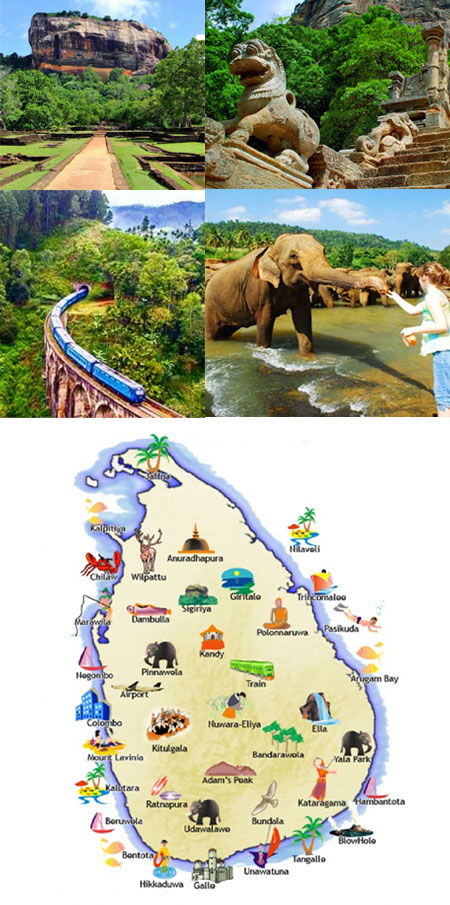Sri Lanka is an island in the Indian Ocean, located to the south of the Indian Subcontinent. Sprawling over the area of 65, 610 square kilometers, Sri Lanka’s shape is dominated by the astonishingly varied features of topography, making it one of the most scenic places in the world. Three zones can be divided by its distinguished elevation: the Central Highland, the plains, and the coastal belt. Sri Lanka which has been know as Serendib and Ceylon lies 27 kilo meters south of the Indian sub continent. The earliest recorded history of the island dates back to the kingdom of Anuradhapura which was established in the 4th century BC. Anuradhapura was the centre of activity for almost 1,500 years.
Due to the repeated invasions from South India Anuradhapura was abandoned and the kingdom moved to Polonnaruwa around the 11th Century AD. Polonnaruwa remained the Sinhalese capital for more than two centuries. The Portuguese arrived in Sri Lanka in 1505 and began occupying the island’s coastal regions. When the Portuguese arrived in Sri Lanka, three main kingdoms had been established. Due to the cordial relationship the Portuguese had with the powerful king of Kotte, Portugal gained a monopoly in the lucrative spice trade. Soon after the entire island was occupied by the Portuguese except for the kingdom of Kandy who were always able to defeat the invaders.
The kings of Kandy enlisted the services of the Dutch to help expel the Portuguese in 1658. The Dutch who successfully managed to drive out the previous occupiers were also involved in many unsuccessful attempts to brink the Kandyan kingdom under their control. The British who arrived in 1796 took control of the island from the Dutch. In 1815 the British took control of the Kandyan kingdom and became the first European power to rule the entire country. English soon became the official language of the country and Tea was introduced in 1870 which enabled Sri Lanka to become the 2nd largest tea producer in the world.
After World War II, Sri Lanka began pushing towards eventual independence which was granted in February 1948. Today the Island offers all its visitors a breathtaking array of fine sandy beaches, beautiful landscapes, impressive archaeological and historical sites, rich fauna & flora, mouth watering cuisine and friendly people. Sri Lanka offers something for everyone and makes sure that nobody leaves disappointed. As one of the great travel destinations in the world, no traveler is complete without a visit to this pearl of the Indian Ocean which truly is a Land Like No Other.


